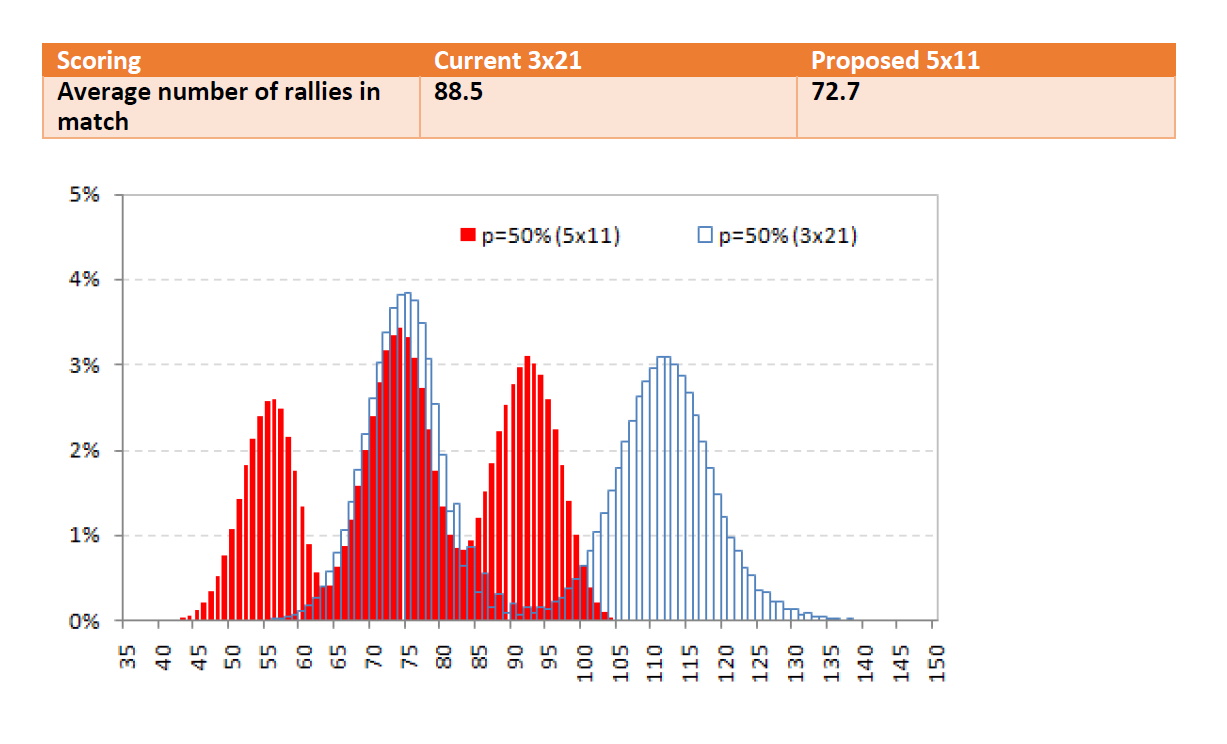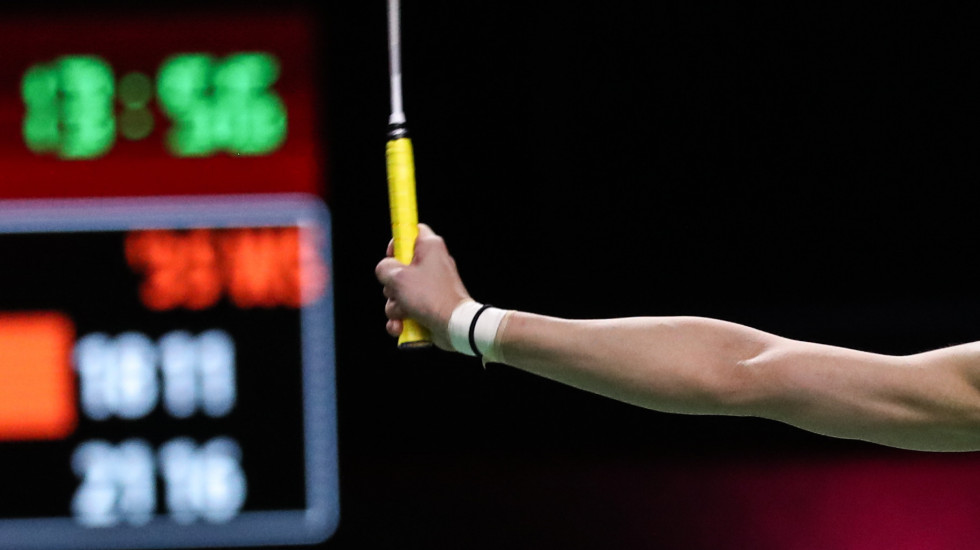To complement the on-court play testing of the proposed new scoring system in event conditions, the BWF invested in professional statistical analysis and comparison of the existing scoring system (3×21) against other potential systems, including 5×11 and 3×15, with various setting and game-ending variations.
The baseline statistical model used for these simulations was created by using the historical TournamentSoftware database of international results and substantial testing was conducted to check the accuracy of the model. The model was also used to test the variations of results from each individual discipline.
The test model was created in cooperation with BWF and BWF’s data suppliers, which gave access to the complete historical database of matches, player rankings and point progression information. The model is carried out at the rally level where each player or pair has a constant probability of winning each rally. Rally outcomes are assumed independent of one another and the model has been validated by analysis against trial events.
Key Findings
Match-winning probabilities in the trial system are practically identical to those in the current system.
- Match-winning probabilities for the trial scoring system (5×11) only differ at most by about 3 percentage points, only slightly favouring the weaker player.
Due to the shorter and increased number of games in the trial scoring system, a weaker player has a good chance of winning at least one game.
The length of the match is shorter under the trial system, particularly in uneven matches.
- The longest matches under the trial system (5×11) are about average length of matches in the current system (3×21).
- In uneven matches, games typically end quick, and often ends in three games, thus limiting the number of points to the weaker player. Under the current system, the weaker player is likely to score more points simply due to the greater length of the game.
As with the current system where players display equal levels of ability, setting has no influence. In the current system, when the first player reaches 11 points, he will have more than 75 per cent chance of winning the game even with players of equal strength, hence already making the outcome of the game quite certain.
- This is even more pronounced when players are unevenly matched, where the stronger player is likely to be even more ahead giving him about a 90 per cent chance of winning the game.
- When reaching the end game, this effect becomes stronger under the current system, but is much less likely under the trial system.
- Thus, even midway through the game under the current system, there is a good chance that the outcome is already settled.
Under the proposed system, it is quite likely for the losing player to win a game even if he eventually does not win the match. This affects the length of the match in different ways according to the scoring system:
- The current system has longer games, but lower probability of extending into three games, particularly in uneven matches.
- The trial system has shorter games, but higher probability of extending into more than three games.

Number of Rallies in Match
- To compare the two systems we can overlay the distributions. This shows how the trial system is markedly shorter than the current one would be under similar conditions.
- The probability of a four-game match in the trial system is about as likely as a two-game match in the current system.
- A five-game match is shorter than a three-game match in the current system.
































